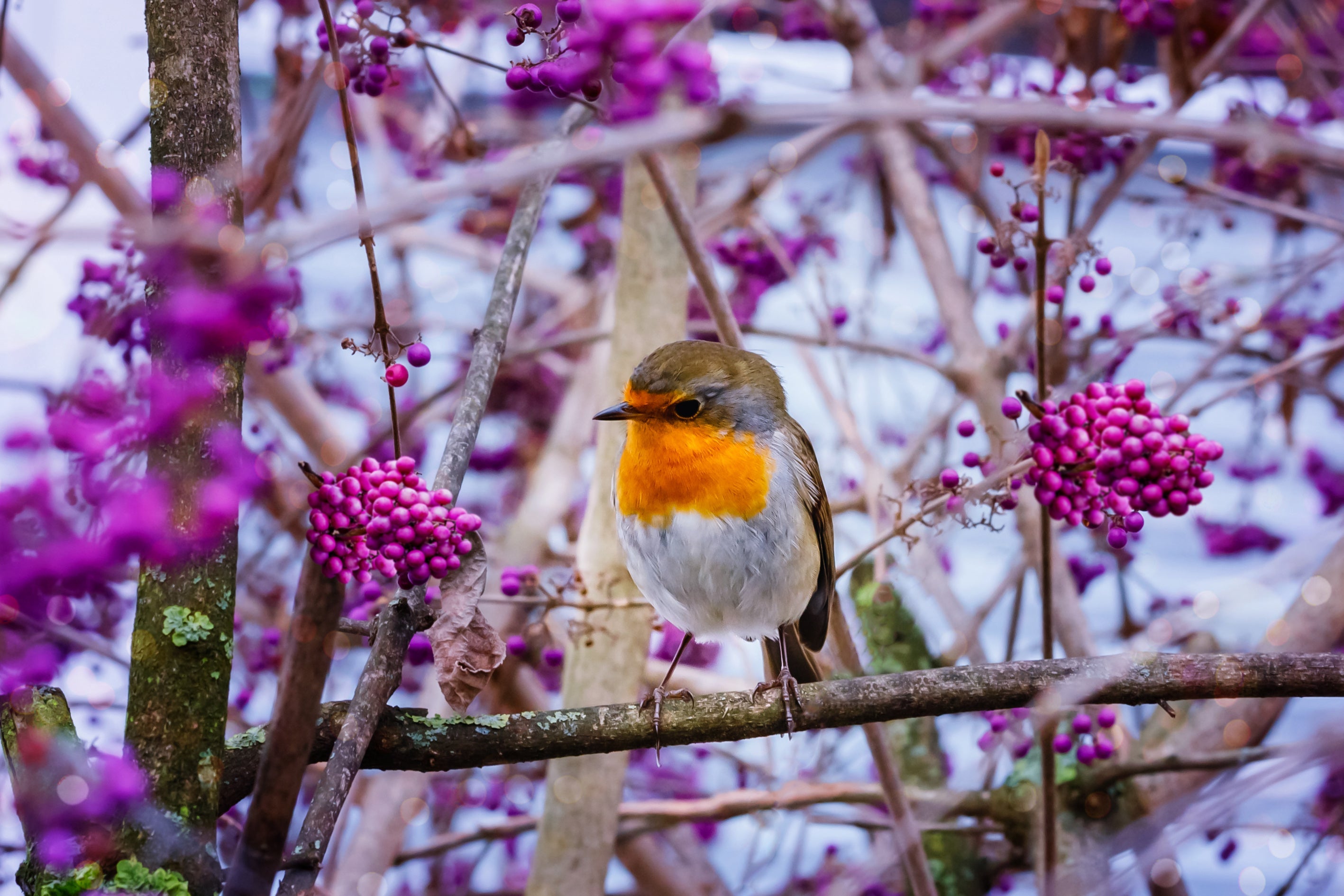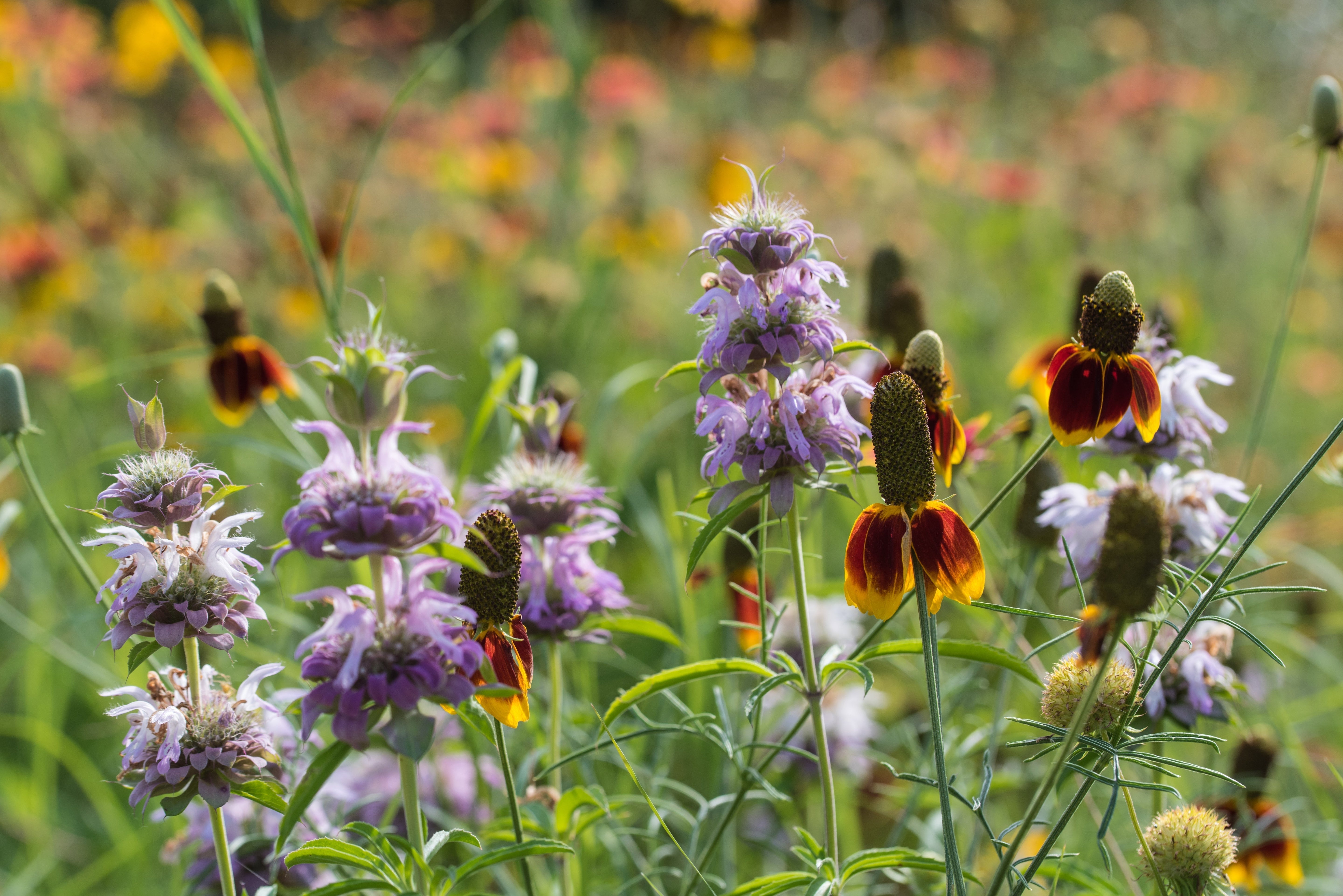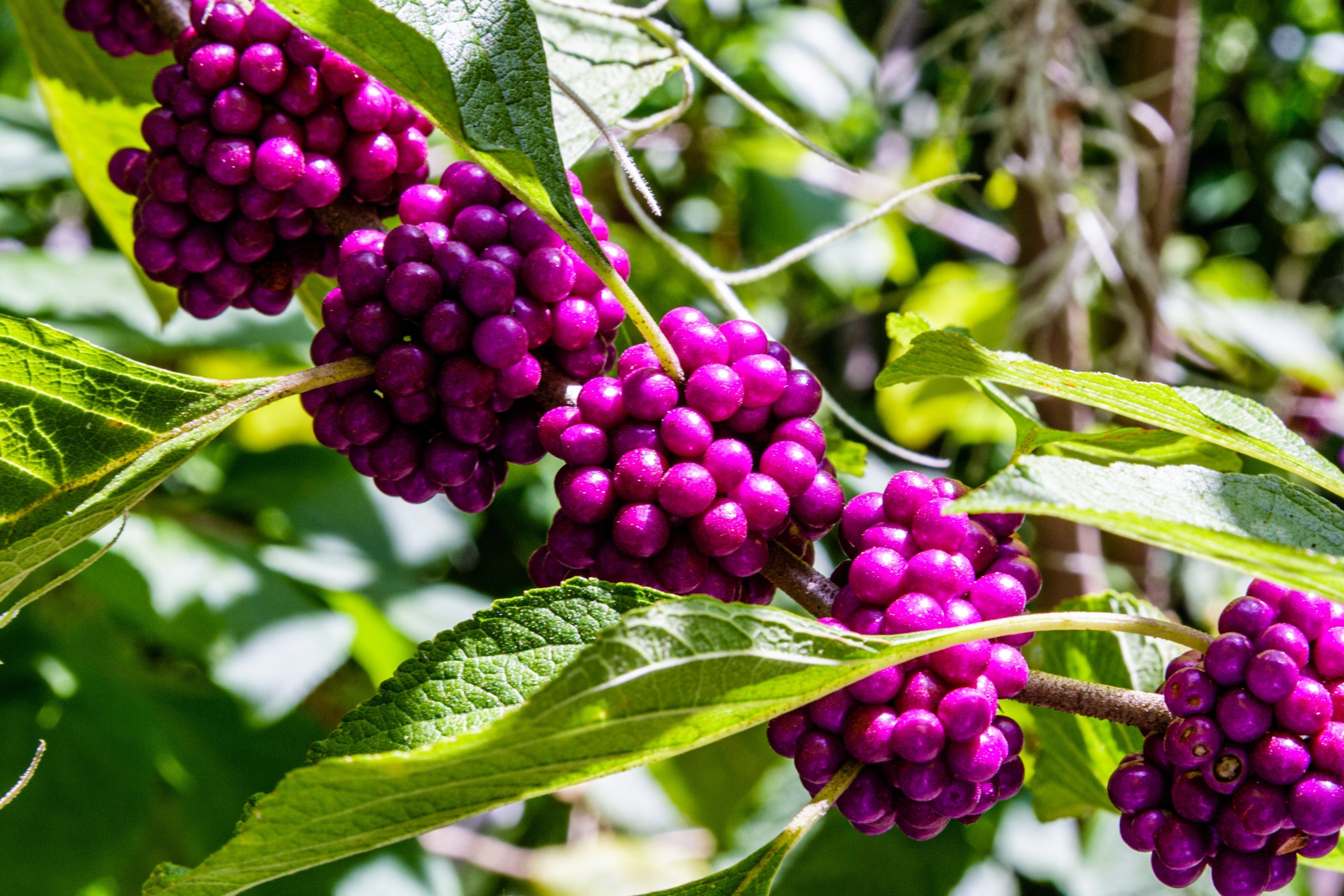Planning Your Wildlife-Friendly Garden: Tips for Designing a Native Landscape

A wildlife-friendly garden is more than just creating a beautiful outdoor space—it’s a thriving ecosystem that supports local birds, butterflies, pollinators, and other wildlife. By incorporating native plants and ecological landscaping principles, you can create a garden that provides food, shelter, and water for diverse species. Best of all, designing a wildlife-friendly garden doesn’t mean sacrificing aesthetics or requiring excessive maintenance. In fact, working with nature rather than against it results in a beautiful, more sustainable landscape with little effort!
What Makes a Garden Wildlife-Friendly?
Wildlife-friendly garden design is all about planting the right plants to support local wildlife. What plants attract native wildlife to your garden? Why native plants, of course! However, there is a bit more to it than that.
You must plant a wide variety of native plant species of different types and heights to support a wide variety of wildlife. You also must use ecological landscaping principles, habitat creation, and, ideally, wildlife corridors, which we will delve into below. Fortunately, it’s a lot easier than it sounds. It simply means choosing the right plant species to provide food and shelter for wildlife and working with nature rather than against it by choosing the right plants for the right location, nurturing healthy soil, and mulching to conserve water and suppress weeds.
Once you learn these basic principles for a wildlife-friendly garden, they will flock to your yard!
How to Choose Native Plants for Your Region
The most important aspect of your wildlife-friendly garden design is choosing the right local native plants for wildlife. This is more than simply selecting a flower species that will attract a certain butterfly that feeds on its nectar. The key is ecological and biological diversity. For those butterflies, this means it’s also about choosing plant species that host their larval stages.

To support a wide variety of pollinators, beneficial insects, birds, butterflies, and even mammals, lizards, and other wildlife, you need a wide variety of native plants. This is how you create ecological diversity and balance, where numerous species can coexist in the same ecosystem.
When choosing plants, a great place to start is to understand your Texas ecoregion, a geographically distinct area with similar climate, vegetation, and soils. Understanding your ecoregion will help you choose the right plants for a regional wildlife garden design. For instance, if you live in the Chihuahua Desert, your native plant species selection will be pretty different than those in the Blackland Prairies or even the High Plains, although they share some similarities. However, keep in mind that just because a plant is not listed in your ecoregion does not mean you can’t grow it. If you live in the Blackland Prairies and want to grow some cacti or agave, simply find your sunniest, highest, and driest microclimate. Diverse microclimates exist in all ecoregions, which allows biological diversity to thrive.
Attracting Birds and Butterflies with Natural Landscaping
Knowing which plants attract butterflies and birds is crucial when creating bird-friendly landscaping designs and butterfly garden designs. Consider the following tips:
-
Plant a Variety of Plants That Feed a Variety of Birds
For instance, plant tubular flowers rich in nectar like the YELLOW BELLS ‘ESPERANZA’ to attract hummingbirds. But also choose other tubular flowers with different colors that bloom at different times of the year to provide a long-term food supply for different hummingbirds.

To attract fruit-eating birds, plant a variety of berries and fruits, again choosing ones that ripen at different times of the year. The AMERICAN BEAUTYBERRY will produce beautiful purple fruits in late summer that may last into early winter.
Image: AMERICAN BEAUTYBERRY is available now at Nativo Gardens!
But also include the CORALBERRY, whose fruits will persist all winter to feed your local over-wintering native birds.
Image: CORALBERRY is available now at Nativo Gardens!
Also, choose a variety of wildflowers that attract a variety of beneficial insects, pollinators, butterflies, and other insects to help feed the insect-eating birds.
-
Don’t Prune Too Early
Never prune dead flowers in your garden until the following spring. Let your flowers go to seed and leave the seed heads all winter. These will feed your seed-eating birds and other creatures that rely on seeds for food.
-
Choose a Variety of Plants to Support a Variety of Butterflies
With butterflies, don’t focus only on the butterfly stage because you won't have any butterflies without host plants for their eggs and larvae. Some plants that are critical larval hosts include things like BUTTERFLY WEED for monarchs or the TEXAS REDBUD, which is the larval host for the Henry’s Elfin butterfly. The BLACK-EYED SUSAN is another excellent butterfly-friendly plant since it attracts butterflies and is the larval host for the Gorgone Checkerspot and Bordered Patch butterflies. It also attracts pollinators; when you let it go to seed, it attracts seed-eating birds, too!
Image: BLACK-EYED SUSAN is available now at Nativo Gardens!
-
Add a Water Source
Add a bird bath if you have no natural water. Ideally, two bird baths, one that sits up higher, which most songbirds will use, but another one that sits on the ground for birds like quail.

Butterflies need shallow water dishes on the ground filled with pebbles to provide places to land and drink without drowning. Don’t worry if the water gets dirty; butterflies are often found sipping water from muddy water; that is how they get necessary minerals.
-
Think About Bird Safety
Make your windows bird-safe by using stickers or window films that will help prevent bird collisions. Also, if you have a cat, place a bird bell on its collar to help warn the birds away when your furry friend approaches.
Designing a Pollinator-Friendly Garden
Like attracting birds and butterflies, pollinator-friendly garden plans also require a wide diversity of native plants that bloom at different times to ensure food throughout the growing season.
For instance, the TEXAS REDBUD is an excellent pollinator tree because it’s the first thing to bloom in the spring, providing crucial food when nothing else is blooming. Image: TEXAS REDBUD is available now at Nativo Gardens!
Then, plant something like that BLACK-EYED SUSAN, which blooms from March through to November, feeding pollinators, birds, and butterflies. Be sure to add lots of other native plants to add even more diversity!
Eco-Friendly Landscaping Principles
Eco-friendly landscapes are beautiful yet functional spaces that are in harmony with nature. The main idea behind ecological landscaping is to understand that your garden is not an isolated island. It is a vital, ever-changing landscape that needs continual flows of plants, water, insects, and wildlife within your garden, neighborhood, and ecoregion. This is why eco-friendly landscaping and wildlife garden designs go hand in hand.
Sustainable Practices
Ecological landscaping naturally involves sustainable gardening practices like utilizing diverse native plants already adapted to your area. These invite a diversity of native wildlife and help create ecological balance. It also involves water-wise gardening techniques, natural pest control, and eliminating synthetic fertilizers and chemicals that harm the wildlife, the soil biome, and the garden ecosystem.
Healthy soil is the foundation of a sustainable garden. Feed your soil with compost every spring and again in the fall to create a healthy soil structure to retain moisture and support beneficial soil microbes, which are the basis of your garden ecosystem. Use natural hardwood mulch to suppress weeds and conserve additional moisture; it will break down over time and replenish the soil.
Wildlife Habitat Creation
Ecological landscaping also involves creating wildlife habitats. Plant various native plant species of different types and height levels. Provide a water source and include rocks, logs, natural mulches, and other non-living elements to add additional habitat. Also, never prune dead flowers until the following spring, as they provide additional food and habitat for birds and beneficial insects.
Reduced Environmental Impact
When you focus on native plants already adapted to your area and avoid synthetic fertilizers and pesticides, you will significantly reduce your environmental impact. You won’t need to pollute the water, soil, and air using chemical fertilizers and pesticides, and you won’t waste precious water resources trying to keep plants alive in the wrong habitat. Planting native plant species also helps conserve native biodiversity and helps keep that important gene flow moving between our wild and semi-wild populations.
Creating Wildlife Corridors in Your Backyard
Your backyard habitat garden design should also include a wildlife corridor to invite them into your yard. What are wildlife corridors? They are simply strips of land that allow animals and other creatures to travel between habitats. Long ago, nature was all interconnected. However, as we developed the land, building highways and shopping malls, we fragmented their habitats so they are no longer connected. Now, our native creatures suffer from a lack of food and gene flow. Wildlife corridors give them a safe way to travel and maintain their populations.
So, how do you create wildlife corridors in your backyard? First, identify the nearest green space to your backyard, like parks, rivers, or other areas with natural vegetation. Next, consider how the wildlife could freely move through that space in and out of your yard. For instance, if you live next to a freeway, that is a difficult barrier; look for something they can access more easily.
Next, use native shrubs and trees to plant in a corridor between your garden and that green space. Adding different height levels of woody plants is critical for year-round protection as wildlife moves through the corridor.
Then, add a nice mix of native wildflowers and berries to provide additional height levels, habitat, and food sources.
Finally, add some non-living ecosystem elements like water features at different heights and large rocks, logs, or even piles of sticks to provide additional shelter and cover.
Final Thoughts
Creating a wildlife-friendly garden is one of the most rewarding ways to support biodiversity and sustainability. By planting native plant species from Nativo Gardens, providing essential habitat, and using eco-friendly landscaping techniques, you can turn your garden into a wildlife sanctuary for birds, butterflies, pollinators, and others. Beyond its ecological benefits, a well-designed native landscape is easier to maintain, conserves water, and enhances the natural beauty of your outdoor space. Start small, experiment with different native plants, and enjoy watching your garden transform into a thriving wildlife haven.





Comments